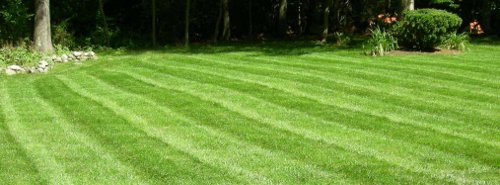
Backyard Grading, Leveling and Flood Prevention Tips
Average Rating
Rate This Article
Most Popular Landscaping and Land Preparation Cities
Related Articles
Decks & Patios Roofing Siding Above-Ground Swimming Pool vs In-Ground Swimming Pool Backyard Landscaping Trends Building a Backyard Soccer Field Building an Outdoor Kitchen Building a Pergola: Types, Uses and Costs Building a Rain Garden Building a Stone Walkway or Path Building Your Own Rooftop Garden Chicago: Backyard Ice Rinks All the Rage Choosing a Hot Tub: One-Piece vs Wooden Staved Composite Decks: A Closer Look Dream Decks: New Survey Reveals Home Owners' Ultimate Deck Ideas 8 Dramatic Backyard Lighting Tips Fences 5 Fun Backyard Winter Landscaping Tips Green Gutters Gutter Installation and Repair A History of Rooftop Gardens Holiday Helpers: Get Your Decorations and Light Display Professionally Installed How to Build a Backyard Fire Pit How to Winterize Your Roof Indoor Gardening Tips and Trends Installing a Backyard Batting Cage Installing & Cleaning Gutters: Dangers of DIY New Trends in Home Greenhouses Modular Tile Courts Take Backyard Sports to a New Level NiceRink: Backyard Ice Rink Installation Resealing Asphalt Driveways Seasonal Landscaping Solar Panel Installation & Info Some Helpful Tips for Installing a Basketball Hoop Tips for a Springtime Garden Makeover Tips for an Eco-Friendly Swimming Pool or Hot Tub 5 Fall Home Improvement Projects 5 Spring Home Improvement Projects 5 Summer Home Improvement Projects 5 Winter Home Improvement Projects Top 5 Deck Building Materials Top 5 Driveway Materials Top 5 Types of Gutters for Your Home Top 10 Advantages of Stucco Your Own Backyard GazeboThe coming of winter seems a strange time to think about spring flooding- you are probably more concerned with winterizing your house. But this is the best time to do so: before the ground freezes, and well before next year’s rains catch you unprepared and underwater.
Backyard Flood Causes
The cause of flooding is an uneven yard. This causes rainwater to collect in one area, generally the middle of the yard. This usually happens to people whose property is slightly lower than that of their neighbors. While a slope of 1-2 degrees might be imperceptible to the naked eye, it can cause a big difference in terms of water run-off. And while Frost may have said that good fences make good neighbors, he also said “something there is that doesn’t love a wall”, and erecting a solid water-retention wall could be more trouble than it is worth.
So where does that leave you? The easiest path would be to just fill in the lowest area of your property to make it level. But that only works if you just have one slight indentation in your yard. Filling it in can also leave you with muck and mire in the spot before the new soil or sod has a chance to settle.
Drainage Pipes
So, assuming the problem is a generally uneven yard, not in line with the surrounding property (a very common scenario), you have several options. Perhaps the best way is to install a series of drainage pipes, in what is known as a herringbone configuration. This looks roughly like the spine of a fish- one of two vertical pipes with a series of diagonal tubes running into it.
Of course, you can’t just plop them into the ground. The diagonal pipes have to be slightly higher than the vertical ones, and those have to be positioned to run the water to the soakaway, or the lowest point. You want to have permeable pipes to let the water run in, and have them surrounded by pea gravel, which will let water through much better than tighter-packed dirt (needless to say, there can be soil and grass on top. Your yard doesn’t have to look like a wasteland).
Rain Gardens
This leaves you with just one problem: what to do with the water at the soakaway point? An increasingly popular option is a rain garden. Rain gardens typically contain local plants, wildflowers and smaller specimens, and have a very natural and non-manicured look to them- and they don’t take a lot of work. This is also an environmentally-conscious option, as it allows water to be filtered back into the underground system naturally without soaking up the small detritus that surrounds a house.
Regrading or Leveling Your Yard
If the problem you have is water running into your house, a more radical option is to re-grade your backyard enough for water to run away from your basement, but ideally not enough to run into your neighbor’s yard. Ideally you want to keep 4" to 6" of the top of your foundation wall exposed and pitch away from the house at about 5% for the first ten feet. After that you can get away with 1.5% to 2% slope on the main lawn area. You want to keep it fairly level so it's not noticeable when you're using the yard. The techniques for doing so are much the same for leveling your yard for an backyard ice rink.
Summing Up
These are all good options, but if you are pursuing any of them, especially the re-grading, it is important to make sure that your measurements are correct. Find a local contractor or engineer to help you figure out what needs to be done, and to make sure it is done correctly. A well-placed pipe or a slight degree of re-grading can save you thousands of dollars in flooding damage.
--Brian O'Neill





